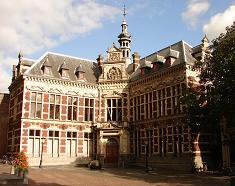Speaker
Mustafa Mustafa
(Purdue University)
Description
Heavy quarks are produced early in the heavy-ion collisions and are
expected to interact with the created strongly interacting partonic
medium differently from light quarks. Therefore, they can shed
new light on understanding the medium's properties. Simultaneous measurements of spectra and azimuthal anisotropy of electrons from semileptonic decays of heavy flavor hadrons provide experimental insight to distinguish different energy loss theoretical models and to characterize heavy quarks medium interaction. During RHIC 2010 run, STAR has collected a large amount of minbias, central and high tower triggered data in Au+Au collisions at $\sqrt{s_{NN}} = 39$, $62.4$ and 200 GeV with detector configuration for minimum photonic conversion background. From this data we will report a new high precision measurement of non-photonic electrons mid-rapidity invariant yield, improved nuclear modification factor and $v_{2}$ in Au+Au collisions at $\sqrt{s_{NN}} = 200$ GeV. We will also report measurements of mid-rapidity invariant yield at $\sqrt{s_{NN}} = 62.4$ and $v_{2}$ at $\sqrt{s_{NN}} = 39$ and $62.4$ GeV.
Author
Mustafa Mustafa
(Purdue University)
